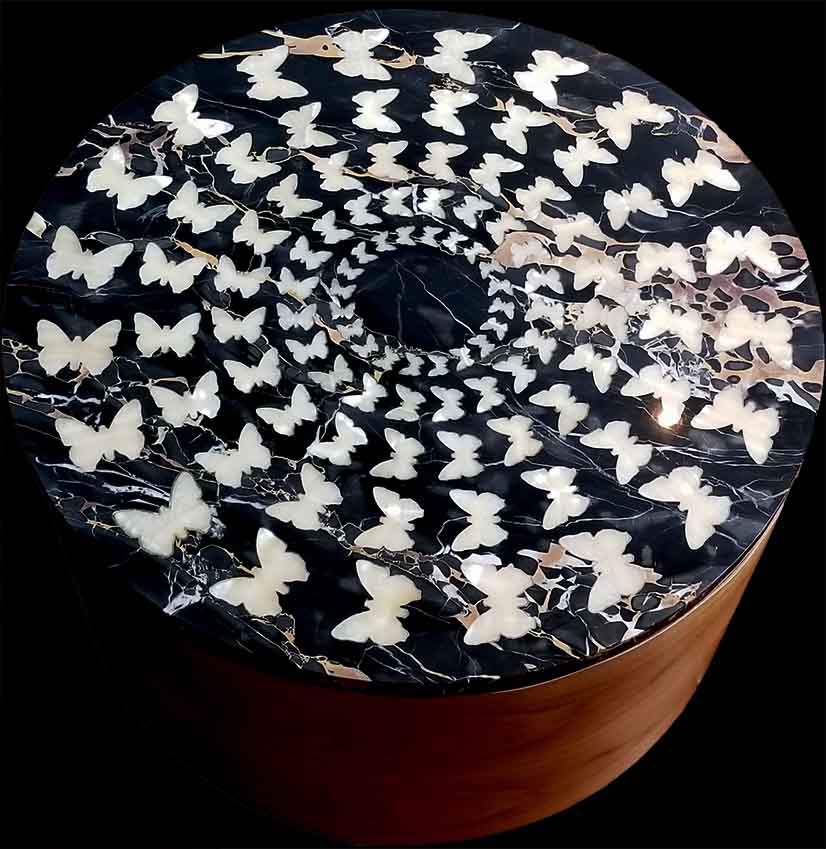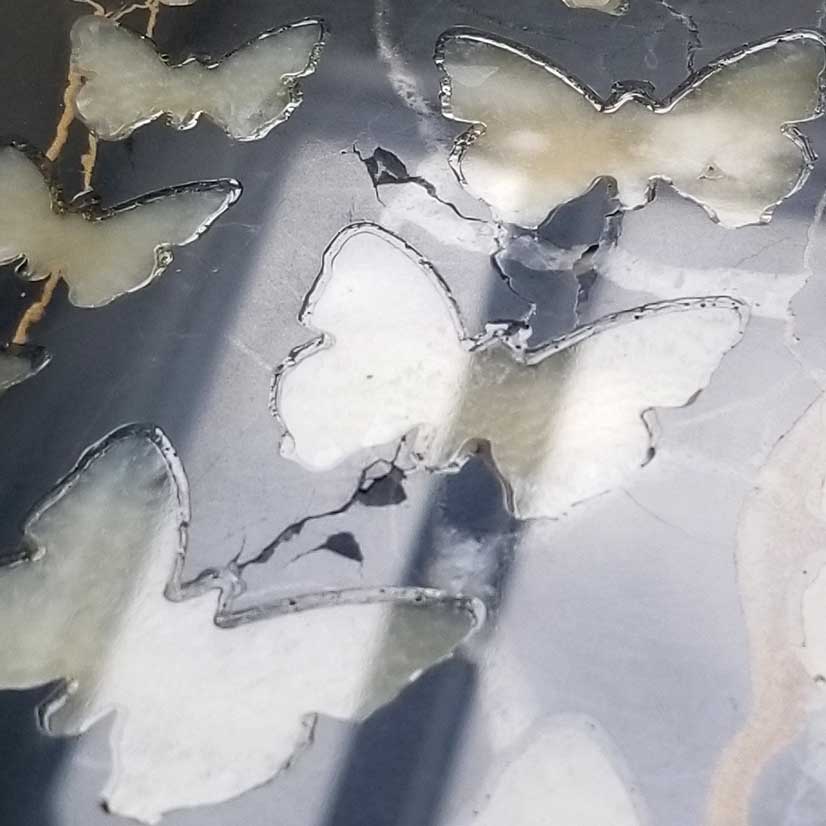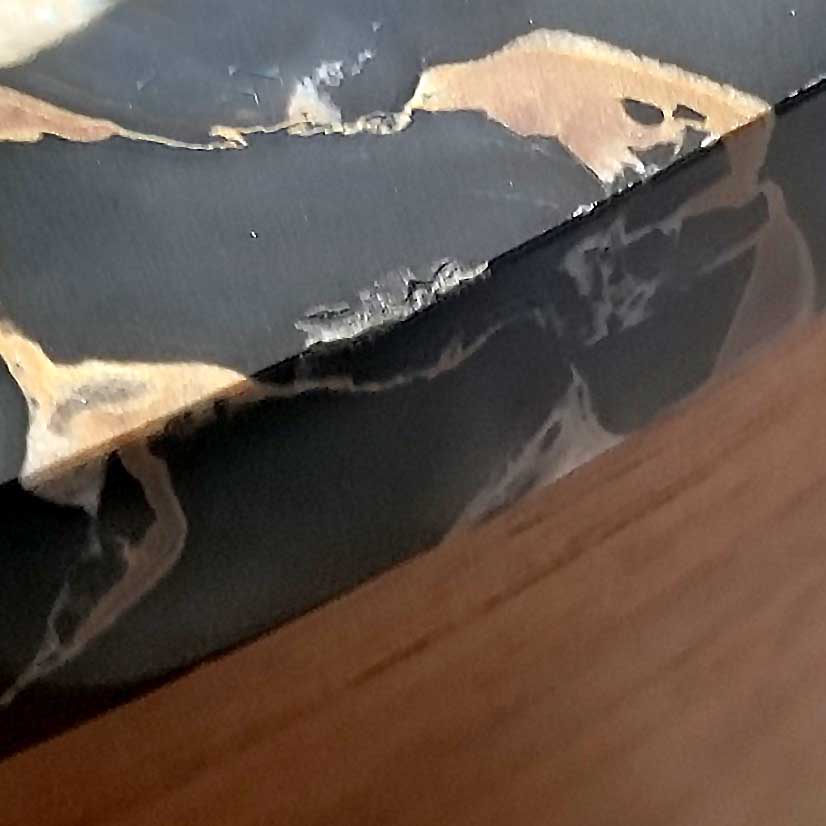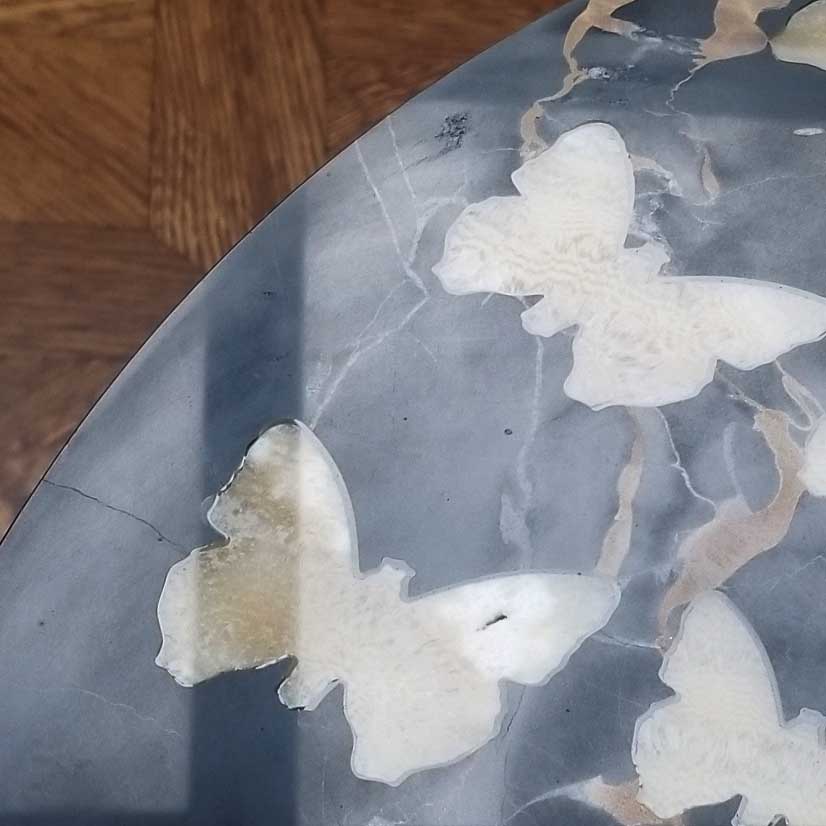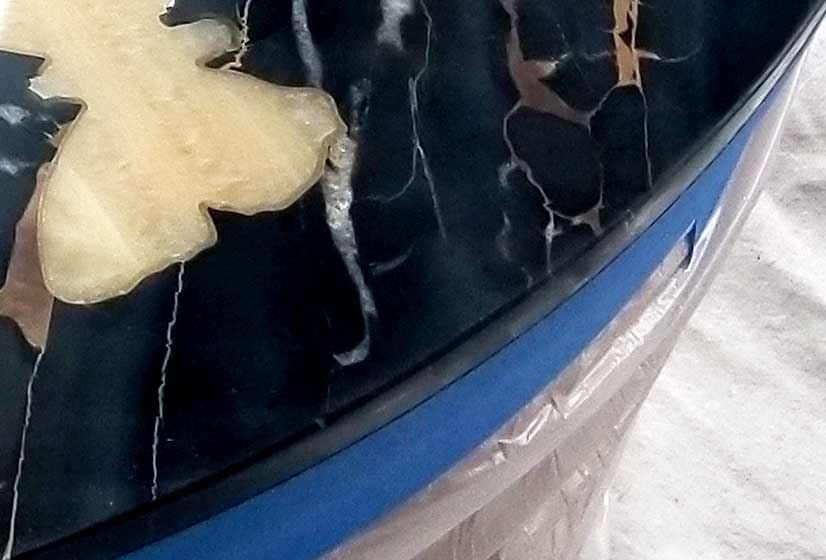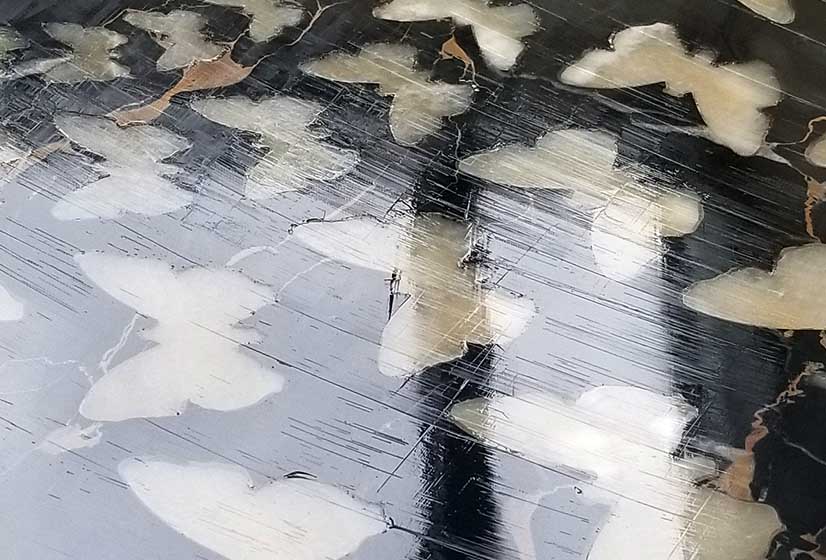This table is unique in every way. The top was produced by an artist working out of Italy. The base was custom made to match the top by a fine carpenter in Toronto.
The top started as a slab of black Portoro Marble. This soft marble is quarried in the Porto Venere region of northern Italy, and is considered quite rare. We typically find this marble on antique tables but don't often encounter it on new installations due to its rarity. This marble is soft and very porous. The butterfly inlays are done in a White Onyx, this is not a rare material, and can be found globally. The onyx has very different physical characteristics from the marble, it is harder, denser and semi transparent. This hardness makes the onyx brittle and susceptible to flaking and cracking.
The inlay sections of the base material and the butterflies were cut using a CNC waterjet. This method allows for precise, narrow cuts into the stone. Each stone type was cut independently and then assembled using stone grade epoxy. Once assembled, the surface was flattened and polished.
